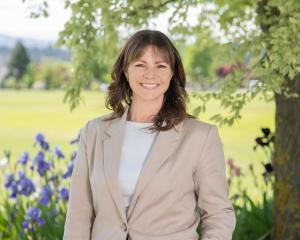
Central Otago Ecological Trust chairman Grant Norbury, of Alexandra, said about 80 volunteers were involved.
The aim was to reintroduce fauna that had been lost from the Alexandra basin, starting with the critically endangered Otago skink.
"What we're passionate about is seeing native wildlife back in its natural habitat.
"Plants and animals have been severely depleted as agricultural development has intensified over the years and we've lost lots of plants and animals.
"Our project is a small step in the opposite direction, to restore native vegetation, keep out predators and build up the population of this skink.
"Otago skinks, being large - up to 30cm long - and charismatic, can act as flagships for educating the community about the special features of dryland ecosystems and how people can help protect them," he said.
The trust was formed five years ago by a group of Alexandra residents interested in wildlife conservation, and it works alongside the Department of Conservation, Landcare Research and the Central Stories Museum.
It is responsible for the Mokomoko Dryland Sanctuary near Alexandra.
The .3ha sanctuary is surrounded by a pest-proof fence and is home to 12 captive-bred Otago skinks, moved there in November.
Mr Norbury said if the trial was successful, the fence would be expanded to protect a wider area.
Once the area was expanded and vegetation restored, other species would benefit from the sanctuary.
It might be possible to reintroduce other endangered species once found in the area.
For now, the focus was on the Otago skinks.
Nine of the 12 had been sighted regularly within the sanctuary, with at least seven surviving the winter.
"That's a very good result and we're hoping there will be population growth.
Once we see babies as well as adults, and that could be 12 to 24 months away, we'll consider it successful," he said.
One of the positive flow-on effects from the trust's work was the community spirit it engendered.
"When school pupils come through and you see the kids roll up and get a real buzz out it, and seeing other volunteers enjoy the opportunity to be involved in New Zealand's natural heritage, that's another benefit."










